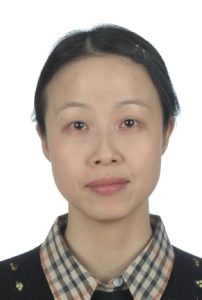
Fang Ying Associate Professor
School of Bioscience & Bioengineering
South China University of Technology
TEL: 020-39380608
Fax: 020-39380607
EMAIL: yfang@scut.edu.cn
Education
M.S. (Fluid Mechanics) Sun Yat-sen University, 1999
B.S. (Fluid Mechanics) Wuhan University of Technology, 1982
Work Experience
Since 2007.1 School of Bioscience & Bioengineering, SCUT, Lecturer and Associate
Professor
2003.3~2007.1 School of Life Science, Sun Yat-sen University, Lecturer;
2001.7~2003.2 Department of Biomedical Engineering, Georgia Institute of Technology,
U.S.A. Visiting Scientist;
1987.6~2001.6 Department of Mechanics, Peking University and Sun Yat-sen University,
Assistant Researcher and Lecturer
Research Areas and Descriptors
Biomechanics of cells and molecules in immune system and vascular system; Platelet adhesion and activation in hemostasis and inflammatory reactions; computation biology
Background
Before 2001, the research field focused on ocean engineering and fluid mechanism, and the results were published in Ocean Engineering, Applied Mathematics and Mechanics, and Journal of Hydrodynamics et al. Current research interests are engaged in Mechano-Chemical regulation and their molecular structure basis in immune response and coagulation process. In 2016, an invited report was made at the 6th Sino-American Workshop on Biomedical Engineering and China-Oversea Joint Workshop on Biomechanics.
Research Projects
1. Mechanical mechanism and molecular baiss of collagen-mediated VWF activation, National Science Foundation of China Grant 11672109 (01/01/ 2017 – 12/30/2020) ¥800, 000, PI;
2. Force regulation on the interaction between leukocyte integrin LFA-1 and its ligand ICAM-1. National Science Foundation of China Grant 11272125 (01/01/2013 – 12/30/2016) ¥820,000,PI;
3. The force dependent reaction kinetic of GBIbα/vWF in flows, National Science Foundation of China Grant 10972081 (01/01/2010 – 12/30/2012), ¥390, 000, PI;
4. The shear stress-regulation on activation and signaling pathway for Leukocyte and platelet, National Science Foundation of China Key Gran 11432006 (01/01/2015 – 12/30/2018), ¥3, 600,000, one of Main Participants;
5. Evaluation and management of cardiovascular disease for South sub-health population, Guangdong Science Foundation Grant (01/07/2007 – 12/30/2010), ¥30, 000, PI;
6. Establishing an evaluation model for reduce gingival bleeding in vitro and its application,Colgate Palmolive (China) Co. Ltd., ¥150,000/year,PI;
7. Biophysical Analysis of Leukocyte Adhesion Under Flow, NIH 1R03TW007529-01 USD$96,000,one of Main Participants.
Representative Publications
1.Huang et al. 2017. Force-dependent calcium signaling and its pathway of human neutrophils on P-selectin in flow. Protein & Cell
2.Liu et al. 2016. Computer prediction of paratope on antithrombotic antibody 10B12 and epitope on platelet glycoprotein VI via molecular dynamics simulation. BioMedcial Engineering OnLine 15:152 (DOI 10.1186/s12938-016-0272-0)
3.Huang et al. 2016. Mechanical regulation of calcium signaling of HL-60 0n P-selectin under flow. BioMedcial Engineering OnLine 15:153 (DOI 10.1186/s12938-016-0271-1)
4.Liu et al. 2013. A mechanism for localized dynamics-driven affinity regulation of the binding of von Willebrand Factor to platelet glycoprotein Ibα. Journal of Biological Chemistry 288(10): 1-10
5.Liu et al. 2013. Flexibility is a mechanical determinant of antimicrobial activity for amphipathic cationic a-helical antimicrobial peptides. Biochimica et Biophysica Acta – Biomembranes 1828(11):2479-2486
6.Fang et al. 2012. Mapping Paratope on Antithrombotic Antibody 6B4 to Epitope Platelet Glycoprotein Ibalpha via Molecular Dynamic Simulations. PLoS ONE 7(7): e42263
7.Li et al. 2012. Force-dependent bond dissociation govern rolling of HL-60 cells through E-selectin. Exp Cell Res 318(14): 1649-1658
8.Ling et al. 2014. Regulation of shear stress on rolling behaviors of HL-60 cells on P-selectin. Science China Physics, Mechanics & Astronomy 56(6):
9.Liu et al., 2011, A rigidity-enhanced antimicrobial activity: a case for linear cationic α-helical peptide HP(2–20) and its four analogues. PLoS ONE, 6(1): e16441
10.Fang et al. 2009. Bending rigidities of cell surface molecules P-selectin and PSGL-1. Journal of Biomechanics 42: 303-307





